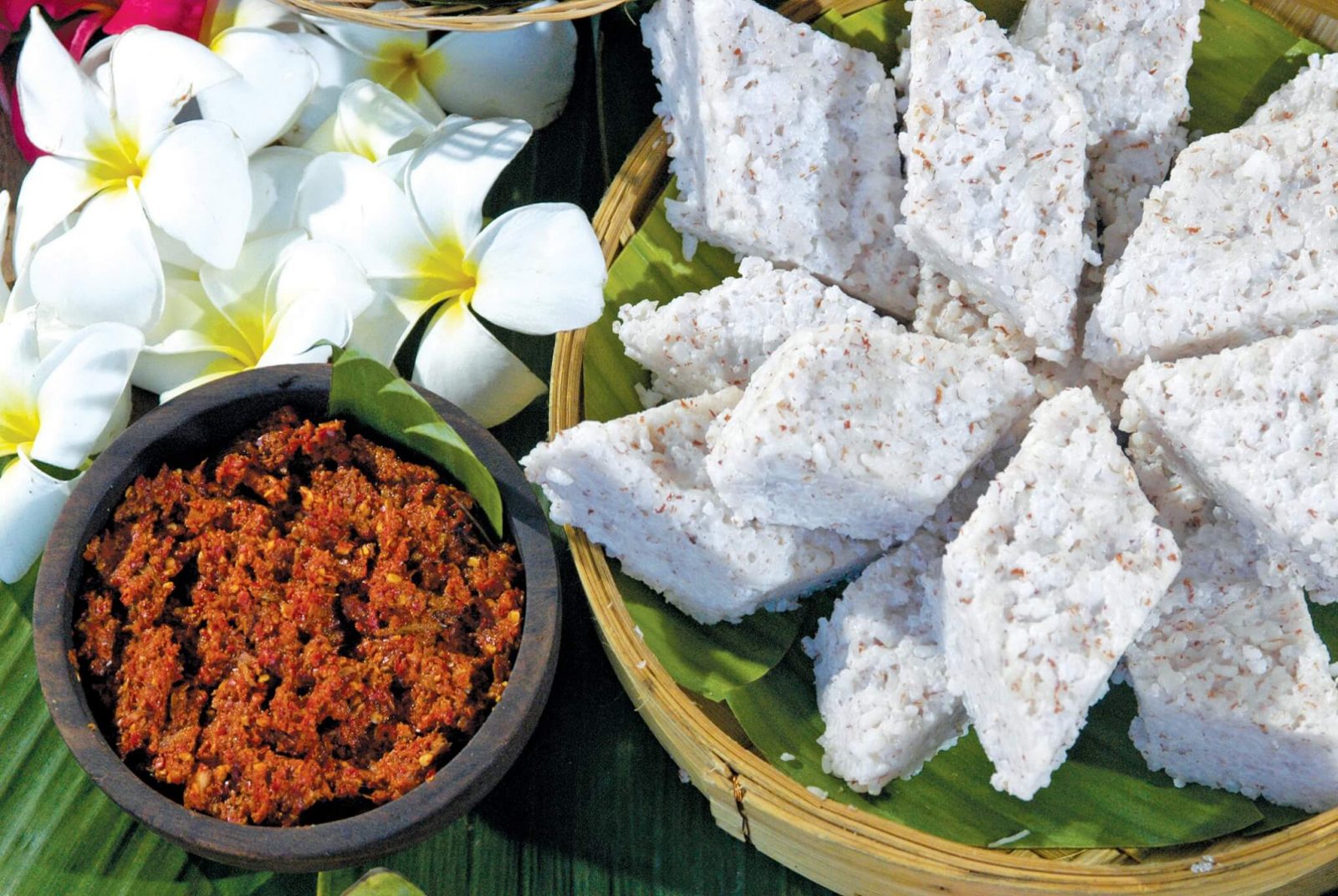1. Achcharu
In Sinhalese, ‘achcharu’ means a ‘mixture of ingredients’ – which is often used to add flavor to a main meal; most often at lunch time. You will taste various types of achcharu in different parts of the country and the taste will vary too. Some of the most common ingredients include mango, ambarella, lime and onions with a topping of chili and olives. For take home purposes, bottled versions of achcharu can also be found at supermarkets.
2. Ambulthiyal
This is an authentic Sri Lankan sour-fish curry which is one of the most favorite spicy dishes amongst locals as well as spice loving tourists. If you can handle the initial rush of hot chili, you will be hooked onto this dish. Local cooks prepare this dish by cooking tuna or any other type of blood-fish with grounded goraka (Gambooge), salt, pepper, cloves and cardamom.
3. Kavum
An iconic symbol of the local New Year is Kavum – a scrumptious oil cake which is served with kiribath (milk rice) and other sweet eats during the festive season. Kavum is made with fine rice-flour and coconut oil and is ranked amongst the most auspicious fare at the dawn of the New Year.
4. Crab
The crabs from the lagoons of Sri Lanka are world renowned and also exported to Singapore and other countries across the world. There are many ways in which crab is prepared and is a much sought after seafood dish at the beach destinations in Sri Lanka as it provides a signature ‘melt in the mouth’ experience.
5. Hoppers
Classified as the most famous breakfast dish in Sri Lanka – hoppers, or ‘appa’ in Sinhalese, are wafer-thin cup shaped pancakes. The rice-flour batter is fermented overnight and includes other ingredients such as coconut milk and palm toddy. It takes special talent to master the art of making hoppers. A perfect hopper is crisp on the edges, and soft and spongy at the center. Egg, cheese, sweet coconut milk and other varieties are added at the center to enhance the variety of hoppers.
6. Pittu
Pittu is one of those Sri Lankan dishes that was influenced by the Malay regiments during the ruling of the European colonial period. Now an essential part of Sri Lankan cuisine, Pittu is made with a mixture of fresh rice meal, freshly grated and roasted coconut. A bamboo or steel mould is used to steam the mixture into the shape of a log.
7. Milk Rice
Kiribath is the Sinhalese name for milk rice, a traditional food specialty cooked on special occasions. According to some Sri Lankans, kiribath brings good luck! For making this dish, rice is cooked in thick coconut milk until the mixture becomes thick and creamy. It is then laid out on a platter for cooling and cutting into cake-like pieces. Kiribath is served with a sharp chili chutney referred to as ‘lunumiris’ or a sweet alternative of treacle and coconut mix called ‘panipol’.
8. Kottu Roti
Kottu Roti is an all-in-one Sri Lankan meal cooked with a whole lot of godamba roti (thin bread) cut into strips, curry, meat and vegetables. To prepare this meal, the ingredients are laid out on an iron tray over a burning fire and two blunt metal cleavers are used to chop and mix the ingredients.
9. String Hoppers
Indiappa, or String Hoppers is another popular breakfast dish in Sri Lanka, which originates from southern India and is also available in Malaysia, Singapore and other Asian countries. Rice flour dough is squeezed through a sieve onto mini woven trays to produce thin spaghetti like strings which are steamed for cooking one on top of the other.
10. Polos Curry
Polos is the Sinhalese name for jackfruit – a large fruit with a coarse, green skin and hundreds of yellow succulent segments inside. This can be eaten fresh or the young green jackfruit is often cooked into a curry which is loved among Sri Lankans – so much that it is now canned and exported to other parts of the world where Sri Lankans reside.

